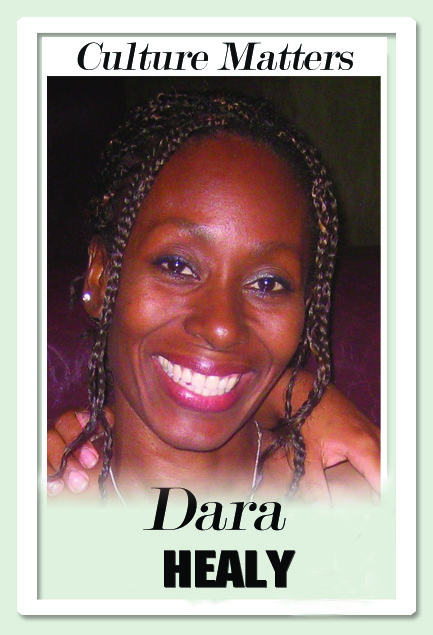Vulnerability, power of the baby doll

Culture Matters
Jumbie Carnival
“You is the daddy? You is the daddy?”
BABY DOLL. Vulnerable yet powerful masquerade of resistance. Dressed as a child, the character confronts a reality unsuited to children. By harassing men to take responsibility for their offspring, the masquerade lays bare an issue that is relevant not only to modern existence, but to sexual politics going back to the days of enslavement and colonialism. As we confront the unevenness of sexual relations in our society, what role can the baby doll play in finding solutions?
It is said that the baby doll emerged on the streets of TT around the late 1800s. At first, she wore “an ankle-length nightie that had sleeves to the wrists with braids around the neck, wrists and ankles. In her arms a “white, blond, blue-eyed doll dressed as a baby with bonnet, baby clothes and booties.” The bonnet was very much a part of Victorian fashion for women, as were puffed sleeves and the tendency to wear clothing to the length of the wrist.
Later, the dress got shorter, knee length or just around the thigh area, with bloomers (Victorian underwear) under the dress. It seems that the New Orleans Mardi Gras baby dolls who emerged around 1912 incorporated a Victorian corset, not under but over their costume.
Why did the clothing of the baby doll get turned inside out? No doubt part of it would have been the influence of the jamette Carnival, so-called by the French who despised its raw nature and the fact that it mocked the elite. The brutal system of enslavement would still have been fresh in the memory of the masqueraders. Further, their living conditions would certainly have been below any acceptable levels of decency. A major element of the masquerade was thus a rejection of social inequity; the mas became a safe space to protest.
But it was also about the politics of sex. Researchers have indicated that prostitution was common in the barrack yards, given the high levels of unemployment at the time. The white, blond hair and blue-eyed doll that the baby doll character held was therefore a reference to the white and light-skinned men who frequented the barrack yards and impregnated the young girls.
On the streets at Carnival time, the baby dolls took their revenge. In a raucous manner that attracted much attention, they would accuse a man of being the father of the child. The “person so charged could absolve himself of paternal responsibility by paying the masker one or two ‘pounds’ (actually pennies), whereupon she would promptly release him and go off in search of the next victim.”
This contestation during Carnival was also a reflection of what today we would call victim blaming. In 1880, the Colonial Office attempted to pass legislation similar to the St Vincent Bastardy Ordinance which forced fathers to pay child support. If you can believe it, Governor Freeling, the archbishop of Port of Spain and other members of the upper class refused to support the legislation as “concubinage was widespread and a deliberate choice of the women involved.” It was not until 1888 that the law came into force.
In 1956, an American film by the name of Baby Doll created havoc with its explicit sexual themes. On screen was a young girl of 19, dressed in a nightie short enough to show off bloomers underneath. She insulted and sexually frustrated her husband, while making it obvious that she had taken a lover. The film caused much upheaval as it explored notions of sexual power and the right of a woman to her body. These discussions continued well into the 1960s and 70s.
In TT, the baby doll portrayal faded in the 1930s. In the late 1990s, our cultural organisation introduced the masquerade as part of an Arts-in-Education programme for schools. The focus was on right choices, so the baby doll talked about peer pressure and the confusion that takes place when young people enter into sexual relations before they are ready. She also talked about her own struggles to understand her sexual awakening.
Instructively, the young people were repulsed by the baby doll, often violently rejecting her. Afterwards, they would talk openly to us about the truth behind the masquerade.
The baby doll has resurfaced for a reason. This spirit of the mas recognises that the imbalances that created her are still present. She is still willing to teach her lessons. It is up to us to listen – “Who is the daddy?”
Dara E Healy is a performance artist and founder of the Indigenous Creative Arts Network – ICAN


Comments
"Vulnerability, power of the baby doll"